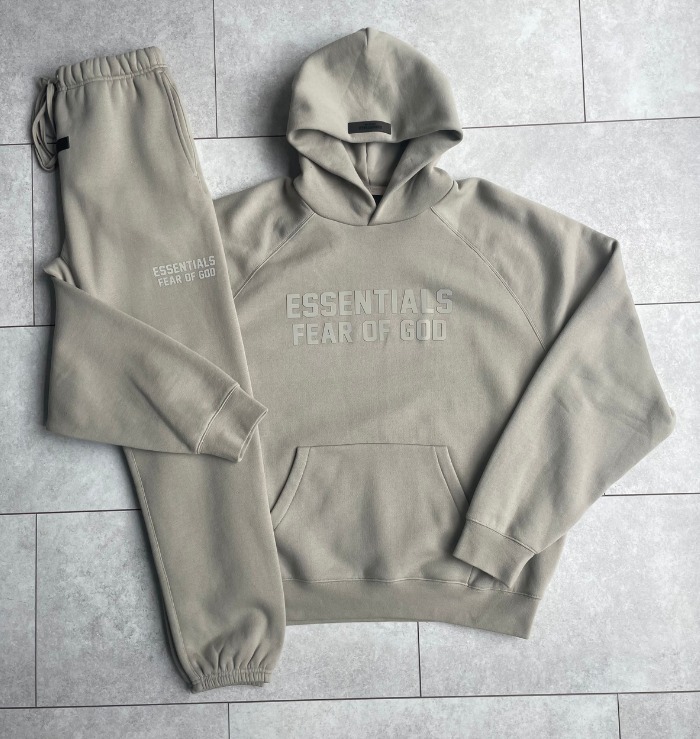
The enduring and ever-growing popularity of hoodies is more than a passing trend—it’s a cultural phenomenon that has evolved from practical sportswear into a global fashion staple, and the most surprising facts about hoodie popularity reveal how this simple garment has captured the imagination and closets of people worldwide across demographics, subcultures, and social classes. Though its roots lie in humble beginnings, the hoodie’s journey into mainstream fashion and cultural symbolism unveils fascinating insights about comfort, identity, and social transformation that many don’t immediately recognize, making the story of hoodie popularity one filled with unexpected twists and deep resonance with modern life.
The Hoodies Origins:
Many people assume the hoodie is a modern invention, but one of the surprising facts about hoodie popularity is its long and storied history. The first iteration of what we now recognize as a hoodie was developed in the 1930s by Champion for laborers working in cold warehouses in upstate New York. Far from being a fashion item, its original function was purely utilitarian—meant to provide warmth and mobility. Its iconic hood was a response to the practical need for head protection without sacrificing freedom of movement. Over time, athletes and college students adopted it for its comfort, and it wasn’t long before it transitioned from factory floors to university campuses and eventually into streetwear culture. This transformation showcases how a garment born out of necessity slowly earned a place in mainstream culture, a fact often overlooked when people associate ericemanul.com solely with trends or youth rebellion.
Hoodies Popularity Culture:
Another surprising fact is how travisscottmerchx.com popularity surged thanks to its adoption by subcultures that valued expression, defiance, and comfort. During the 1970s and 1980s, hip-hop artists in New York City embraced hoodies as part of their everyday style, using them as visual statements of resistance, community, and identity. Simultaneously, skaters in California began using hoodies for their practicality and anonymity during long hours on the streets. These movements were deeply tied to urban life, where the hoodie was not only practical but symbolic. Artists like Run DMC and Tupac Shakur helped elevate the hoodie into a recognizable cultural symbol, and brands like Adidas and Nike quickly caught on, releasing hoodies that resonated with these communities. The garment’s association with underground scenes gave it a cool, edgy allure that carried over into the mainstream and contributed significantly to its popularity.
Controversy Only Made the Hoodie More Powerful
Few garments have sparked as much debate as the hoodie, and surprisingly, these controversies often led to even greater popularity. In the early 2000s, hoodies became synonymous with fear and suspicion in the media, especially when worn by young Black men. Perhaps most famously, the tragic death of Trayvon Martin in 2012 while wearing a hoodie led to nationwide protests and a movement that reframed the hoodie as a symbol of racial profiling and injustice. While this negative attention was rooted in deep social issues, it also catapulted the hoodie into the center of political discourse and galvanized communities to use fashion as a form of protest. The hoodie became more than a piece of clothing—it became a symbol of solidarity, awareness, and resistance. These layers of meaning are a major reason for the hoodie’s ongoing cultural relevance and broad appeal across diverse populations.
Tech Giants Normalize Hoodies:
One of the most unexpected facts about hoodie popularity is how Silicon Valley played a role in elevating it from streetwear to boardroom attire. Entrepreneurs like Mark Zuckerberg famously wore hoodies in professional settings, challenging traditional norms of business fashion. This shift was not just stylistic—it was ideological. The hoodie came to represent innovation, disruption, and nonconformity, particularly in tech and startup environments. It suggested that intelligence and success did not require a suit and tie but could exist in comfort and simplicity. As tech companies rose to dominate the global economy, their casual dress codes influenced industries far and wide, legitimizing the hoodie as professional attire and increasing its popularity among young professionals seeking to emulate that ethos.
Hoodies Sales Surged:
Another eye-opening fact about hoodie popularity is how it consistently sees sales spikes during times of social or economic uncertainty. The COVID-19 pandemic, for example, led to a massive boom in loungewear, with hoodies leading the pack. As people spent more time at home, comfort became paramount, and the hoodie offered the perfect combination of warmth, ease, and emotional security. But this trend wasn’t limited to just the pandemic—previous global downturns have also seen increased hoodie adoption, highlighting how this garment becomes a go-to item in moments of stress or instability. This psychological connection between hoodies and comfort has helped cement their place as a fashion staple that transcends style and becomes a form of self-care and protection during uncertain times.
Fashion Has Embraced the Hoodies:
Another surprising development in hoodie popularity is the full embrace by high fashion. Luxury brands like Balenciaga, Gucci, and Louis Vuitton have all released hoodies as part of their high-end collections, often with price tags well into the hundreds or thousands of dollars. This wasn’t always the case—just two decades ago, the hoodie was viewed by many in the fashion industry as too casual or street-level to be considered luxury. Today, however, collaborations between streetwear labels and legacy fashion houses—such as Supreme x Louis Vuitton—have blurred the lines between streetwear and haute couture. This crossover has not only elevated the hoodie’s status but has also introduced it to new demographics, including those who may have previously dismissed it as juvenile or too informal. The result is a garment that now straddles both ends of the fashion spectrum with ease.
The Unisex Appeal Drives Hoodies:
One of the hoodie’s quiet superpowers lies in its universal appeal. Unlike many fashion items, hoodies transcend gender, age, and body type, making them one of the most inclusive garments available. This unisex appeal has been a huge driver in global hoodie demand. Brands now routinely release gender-neutral hoodie collections, and many consumers, particularly Gen Z and Millennials, prefer oversized or relaxed fits that aren’t limited by traditional fashion binaries. This inclusivity also extends across cultures, with people worldwide adopting hoodies in unique ways that reflect their local style, from layered Japanese streetwear to minimalist Nordic fashion. The fact that the hoodie feels equally relevant in São Paulo and Stockholm is a testament to its adaptability and universal charm.
Personalization and Customization Hoodies:
Perhaps one of the most modern and surprising trends fueling hoodie popularity is the rise of personalization. With the help of print-on-demand platforms, embroidery services, and DIY design tools, consumers can now create hoodies that reflect their exact tastes, interests, or messages. Whether it’s a startup logo, a meme, a favorite quote, or a fan tribute, personalized hoodies have exploded in popularity. This democratization of fashion allows anyone to become a designer, and the hoodie’s blank-canvas nature makes it the perfect medium. As individual expression becomes more important than ever in the fashion world, the ability to craft a one-of-a-kind hoodie has only intensified its appeal and further embedded it into daily wear culture around the world.
Conclusion:
The surprising facts about hoodie popularity show that this garment is far more than a cozy layer—it’s a cultural chameleon, a political statement, a fashion canvas, and a universal comfort item all in one. Its rise has been powered by a blend of history, subculture, controversy, innovation, and inclusion, and it continues to adapt in ways that reflect the shifting landscape of fashion and society. Whether seen on a protest line, in a luxury boutique, at a skatepark, or on a Zoom call, the hoodie remains relevant, resonant, and revolutionary. What makes its popularity so enduring is its unique ability to hold meaning for so many different people in so many different ways. As the world continues to evolve, the hoodie stands as a reliable companion—practical, expressive, and surprisingly powerful.




